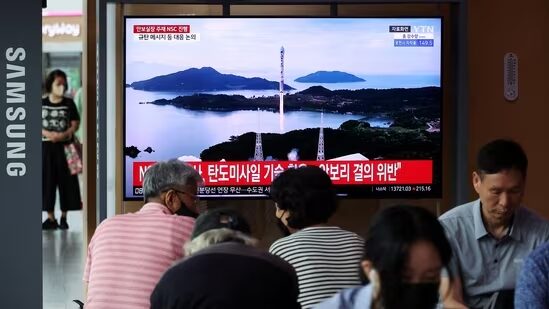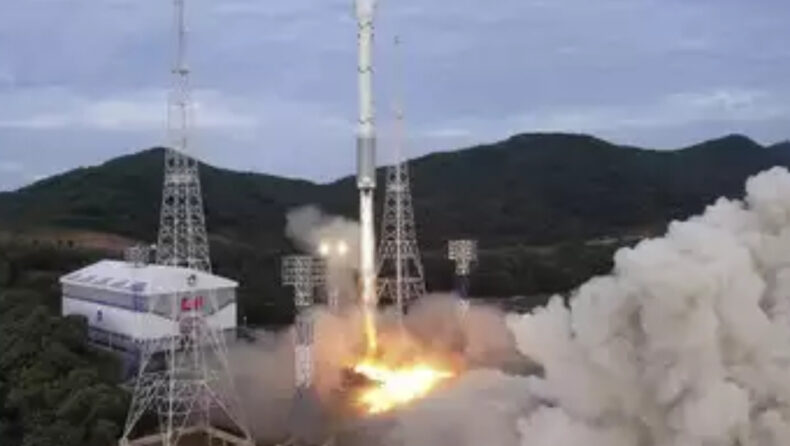It has been reported by North Korea that their second attempt to place a spy satellite in orbit on Thursday failed. The North’s state news agency informed the reason for the failure of Thursday’s launch was because of an error in the rocket booster that happened during a three-stage flight of the rocket. The second attempt came just months later after Pyongyang’s first attempt crashed into the ocean shortly after the launch. Despite, the failures, the space authorities have vowed to try again in October.

North Korean Leader Kim Jong Un has made it his top regime priority to develop an eye in the sky as he claims that it has become essential for his nuclear-armed country to counterbalance the growing US military activism in the region. He eventually plans to a fleet of satellites in space to monitor moves by U.S. and South Korean troops.
The second attempt of North Korea:

Commenting on Thursday’s launch, the state news agency KCNA said that the flights of the first and second stages of the rocket were normal. An issue with the emergency blasting mechanism during the third-stage flight caused the launch to fail. The failure of the launch was also confirmed by South Korea’s military which was keeping track of the flight from its launch at the North’s Sohae Satellite Launching Ground.
Just before 4 a.m. local time(1900 GMT), the launch sparked an emergency warning in Japan through the J-alert broadcasting system, instructing the southernmost prefecture of Okinawa to seek shelter inside. Twenty minutes following the alert, the Japanese government followed up with a notice that the missile had passed through the Pacific Ocean and lifted the emergency warning.
Japan’s Response:
Japanese Chief Cabinet Secretary Hirokazu Matsuno, in a televised press conference, expressed his contempt for North Korea’s launches. He said that the repeated missile launches were posing a threat to regional security. Matsuno informed that the parts of the rocket fell into the Yello Sea, the East China Sea, and the Pacific Ocean.
South Korea’s response:
Following the lead of Japan, South Korea’s National Security Council too, condemned the launch as a provocation and violation of U.N Security Council resolutions banning the North’s use of ballistic missile technology.
Pyongyang was criticized by South Korea’s National Security Council for the launch, saying in a statement that it “deplored the fact that it continues to blame others for its failing economy and ruined civilian life, pushing its people to starvation and death, while squandering its limited resources on reckless provocations.”
Violation of U.N. Security Council Resolutions:
North Korea’s attempted satellite launch stands in violation of numerous U.N. Security Council resolutions and thus, is barred from U.N. Security Council resolutions in contempt of conducting ballistic missile tests. The U.S. State Department on Wednesday urged North Korea to refrain from “further threatening activity.” They have invited Pyongyang to engage in serious diplomacy.
As reported by TOI, a statement was given by a State Department Spokesperson where it was informed that SLVs (Space launch Vehicles) incorporate technologies that are identical to and interchangeable with, those used in ballistic missiles, including intercontinental ballistic missiles (ICBMs).
This year, North Korea has already launched 24 ballistic missiles, including four ICBMs. A record-breaking number of ballistic missiles were launched by the nation last year—more than 70.
1st Satellite Launch of North Korea:
On May 31, North Korea attempted to launch its first spacecraft in over seven years, a spy satellite. Chollima-1 satellite rocket also failed, with the booster and payload plunging into the sea after a failure. The second-stage engine of that rocket failed, causing it to crash into the Yellow Sea.
At a depth of roughly 70 meters, South Korea recovered wreckage in the Yellow Sea’s international seas. Large portions of the rocket and the satellite were retrieved, providing a rare up-close view of Pyongyang’s capabilities despite the fact that it was determined that the technology had little military value.
Future Launches:
Turning a blind eye to the criticism, North Korea’s National Aerospace Development Administration (NADA) vowed to investigate the cause of failure and fix it. They further said that “it is not a big issue” in terms of the rocky system’s overall reliability.
KCNA reported, “NADA expressed the stand that it would conduct the third reconnaissance satellite launch in October after thoroughly probing the reason and taking measures.”













